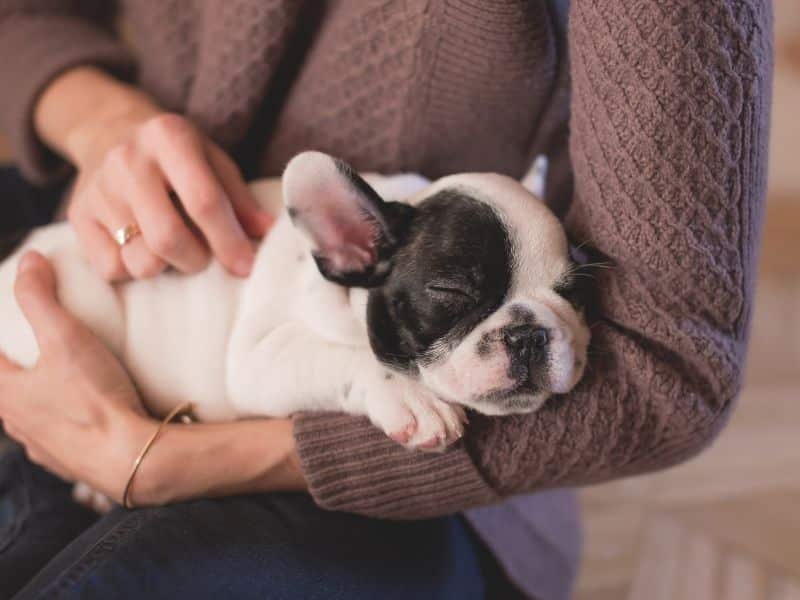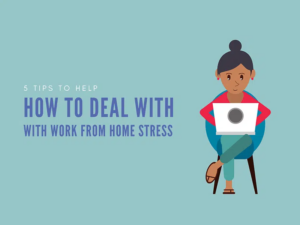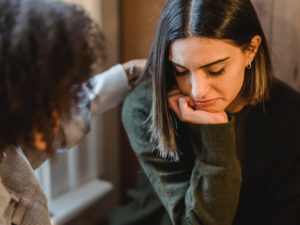Separation Anxiety in Dogs: How to Help Your Pet Stay Calm & Relaxed

Returning to the office after working from home? While you may be excited about the change, your pup may not be so thrilled, especially if they had gotten used to your work-from-home routine.
Separation anxiety in dogs is a common problem that can be exacerbated by a long workday. Even if you wish you could stay home all the time to keep them happy, it’s just not realistic for most people.
To keep them safe, you need to give them the skills to thrive on their own.
Here are some ways to keep your pets happy and calm while you’re away.
Causes of Separation Anxiety in Dogs
Separation anxiety occurs when a dog becomes distressed because their guardians leave. In many cases, you start to see the symptoms of this distress when starting the process of leaving.
Some dogs with separation anxiety will bark, whine, or get in the way when you’re trying to put on shoes or get your coat. They might try to prevent you from leaving when you try to exit the door, or they might try to leave with you by bolting out the door themselves.
Common symptoms of separation anxiety include these behaviors. They’ll occur while you’re gone and sometimes while you’re in the process of leaving.
- Urination or defecation. If your adult dog is housebroken and still performs these behaviors, they can be seen as signs of distress.
- Destruction. If you come home to a house with a ripped pillow, destroyed shoes, or stolen food, your pet was bored, nervous, and didn’t know how to redirect that energy in a productive way.
- Excessive barking and howling. Your dog is trying to communicate with you while you’re leaving, and after you leave, they’re trying to make you answer their call for help.
- Escape attempts. If your dog thinks it’s been too long since you’ve been home, they might try to get out of the house to find you. They can break through windows, chew their way through screen doors, or abuse any weak point they can find to leave the house. This can result in missing dogs, which puts them in danger.
Separation anxiety is common in adopted dogs. If a dog was with their family since they were a puppy and they suddenly were surrendered, they won’t understand why their family abandoned them. Once they start to trust and fall in love with you, they’ll always be afraid that they’ll be abandoned once again.
Separation anxiety can also occur in dogs that have never had a permanent home. If they’ve been shuffled from rescue to rescue and foster home to foster home, they have no sense of what home should be: permanent.
Even if you’ve had them for a while, they might not understand that you are their forever home. They’re afraid that you’ll abandon them, just like everyone else.
Understanding their history and where their anxiety comes from is important in coming up with a treatment. It also gives you sympathy for what they are feeling, and will hopefully give you a sense of patience when dealing with unpleasant behaviors.
Here’s an example: my grandmother adopted a 9-year-old German Shepherd named Rambo. Rambo spent the first 9 years of his life tied outside to a pole, because the family didn’t want him in the house.
He quickly fell deeply in love with my grandmother because she spoiled him with so much love. He never wanted to be apart from her. He got really upset when she went to work.
One day, he got so upset that this 95-pound dog jumped through a two-foot by two-foot window that was partially blocked by a couch, and when she got home from work, he was sitting on the front porch, wagging his tail because she was finally home.
We’re extremely lucky that he somehow managed to do no damage to himself and was smart enough to stay by the house. He could have injured himself with the glass or he could have run into traffic.
My parents helped my grandmother cover the windows with safety bars so it didn’t happen again and gave him more complex toys to play with while she was gone.
Rambo was delighted when she finally retired.
Training Your Dog to Be Independent
Depending on the severity of your dog’s attachment issues, it can take quite a bit of training to help them feel confident and independent when you aren’t home. If you’ve rescued your pup, they’re used to people leaving them and can become extremely distressed when you leave; they’re afraid you may never come back.
To help your dog overcome their anxiety, here are a few methods to try.
Crate Training
The most important part of helping a dog suffering from separation anxiety is making sure they are safe. While it’s irritating to come home to shredded couches and broken objects, it’s more important to make sure your dog doesn’t get into anything that could harm them.
If you aren’t there to watch, they could swallow something toxic or injure themselves when they get stuck somewhere. In some cases, they can even try to break windows to escape in order to find you.
Crate training helps you control the environment so they can’t hurt themselves. When used correctly, it’s not a “jail” used to punish your dog: it’s their safe space.
Make it very comfy with blankets and a dog bed, and give them plenty of safe toys to play with. This can be used until the dog learns not to engage in destructive behaviors, saving both your house and themselves from injury. If the crate is used excessively, it will feel like a punishment, so never leave them for too long.
Finding Ways to Keep Them Occupied
One way to beat separation anxiety is by keeping them stimulated and entertained even after you leave the house. As they say, idle paws are the devil’s playthings. A common behavior of dogs suffering from separation anxiety, or even just boredom, is destruction.
Dogs have a knack for getting into things they shouldn’t. If you want to keep your pup from picking up your keys or shredding your pillows, you need to give them something else to keep them occupied.
- Puzzle toys. Not all dog toys are just stuffed animals or squeakers. Give your dog something a little more complicated. Kongs are a great example; take a Kong toy, put peanut butter inside, pop it in the freezer, and at the time you leave, give them the toy. They’ll spend a good amount of time and effort trying to get every last lick of peanut butter out of the toy. Make sure they only have access to this special toy when they are alone, so they know that this is a perk of being on their own.
- Background noise. Sometimes having the television or the radio on can help calm your dog. It makes it less obvious that they’re home alone, which can give them the confidence to find something to do on their own.
- Dog walkers. No amount of training can help your dog handle being alone for an entire work day. This is especially important if they’re being crate trained. No dog should be in a crate for 8 hours at a time, because then it will feel like a punishment. And even if they can entertain themselves, nature will call at some point. Have a family member or a Rover sitter come to your home halfway through the work day to take them on a walk to let them do their business, tire themselves out, and get a change of scenery. If the walker gives them some playtime once they get back to the house, they’ll likely curl up and take a nap once they leave.
Getting Medical Advice
If your dog isn’t responding to any of these methods, maybe it’s time to talk with a veterinary behaviorist. Your local vet could give you some alternative options to help calm your dog while you’re away. They could offer some light drug therapy, such as CBD chews to help relax them.
These could be especially helpful if your dog has any medical problems such as epileptic seizures. If you want to try these methods, always make sure to consult your vet first.
Make Your Dog Feel Valued and Loved
Leaving your dog alone is an inevitable part of pet parenthood. That’s why it’s extremely important to make them feel loved whenever you are home.
They’re just a part of your world, but to them, you’re their whole world. When their person returns home, it’s a cause for celebration! Most dogs can’t contain their excitement.
So spend the extra 15 minutes to give them the playtime they are begging for. Give them an extra helping of belly rubs. Let them snuggle with you on the couch while you watch your favorite show.
Separation anxiety in dogs is directly caused by them missing you. Some day, they won’t be a part of your life anymore.
Don’t look back on your time with them and wish you would have paid more attention when you had the chance. Spoil them with love while they’re here.
Author, Artist, Photographer.
Sarah Margaret is an artist who expresses her love for feminism, equality, and justice through a variety of mediums: photography, filmmaking, poetry, illustration, song, acting, and of course, writing.
She owns Still Poetry Photography, a company that showcases her passion for capturing poetic moments in time. Instead of poetry in motion, she captures visual poetry in fractions of a second, making cherished keepsakes of unforgettable moments.
She is the artist behind the Still Poetry Etsy shop, which houses her illustrations and bespoke, handmade items. She is the author of intricacies are just cracks in the wall, a narrative poetry anthology that follows a young woman discovering herself as she emerges from an abusive relationship.






Responses